Norse cosmology, with its rich tapestry of gods, giants, and mystical realms, has captivated the hearts of many who tread the path of Norse mythology and paganism. At the very center of this intricate web of tales and lore stands Yggdrasil, the immense World Tree, a concept as profound as the universe itself. It’s not merely a tree; Yggdrasil is the very framework of the Norse universe, its branches and roots cradling the nine worlds, each a unique domain with its own inhabitants and stories.
This article is a voyage into the heart of these ancient narratives, tailored for those just beginning their journey through the enchanting realms of Norse mythology. With every word, we invite you to explore the depths of Yggdrasil and the vibrant life it sustains within its nine worlds.
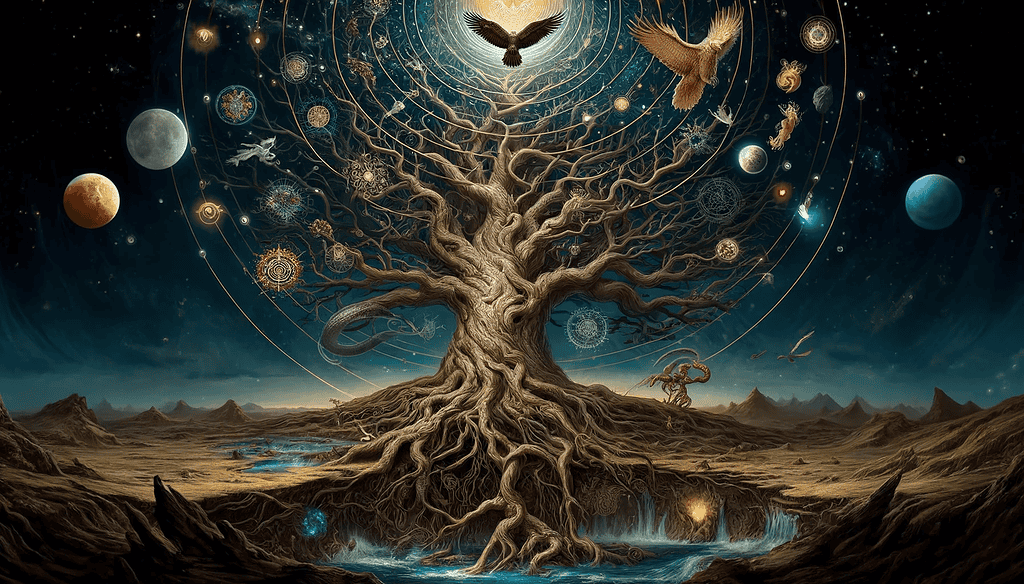
Table of Contents
Yggdrasil: The World Tree at the Heart of Norse Cosmology
The Concept of Yggdrasil
In the heart of Norse mythology lies Yggdrasil, an immense ash tree that is far more than just a part of the natural world. This cosmic tree uniquely bridges the gap between the physical and the spiritual, serving as the very scaffolding upon which the Norse cosmology is built. It’s a central figure that connects the nine worlds, holding them in its massive embrace. Yggdrasil is not just a tree; it’s the very axis mundi, the world’s axis, around which the universe’s diverse realms are organized, making it an essential concept for anyone delving into Norse myths and paganism.
Roots and Branches: The Structure of Yggdrasil
Yggdrasil’s grandeur is matched only by its complexity. It stretches far beyond the realms of men, its branches reaching into the skies of the gods and its roots delving into the darkest depths of the underworld. Three major roots anchor Yggdrasil, each extending to a significant realm; one finds its way to the well of Urd in Asgard, home of the gods; another to the spring of Mimir, brimming with wisdom’s waters; and the third to the frosty springs of Hvergelmir in Niflheim, the realm of ice and mist.
These roots are not just physical structures; they are conduits of the cosmic energies that flow through the tree, connecting the realms and ensuring the cosmos’s balance. Along these roots, and nestled within the branches of Yggdrasil, reside various creatures, each with a role in the Norse cosmological narrative. The dragon Nidhogg gnaws at the tree’s roots, seeking to undermine the worlds’ stability, while the eagle perched atop its highest branch symbolizes the lofty heights of the spiritual realms. Between these two, the squirrel Ratatosk scurries, carrying messages and gossip, embodying the communication between the worlds.
Understanding Yggdrasil’s structure and its inhabitants provides a foundational insight into Norse cosmology. It’s a reflection of the Norse people’s deep connection with nature and their understanding of a universe intertwined with the fates of gods, giants, and humans. For those of us drawn to Norse mythology and paganism, Yggdrasil offers a rich symbol of interconnectedness and the balance between the various forces that govern the cosmos.
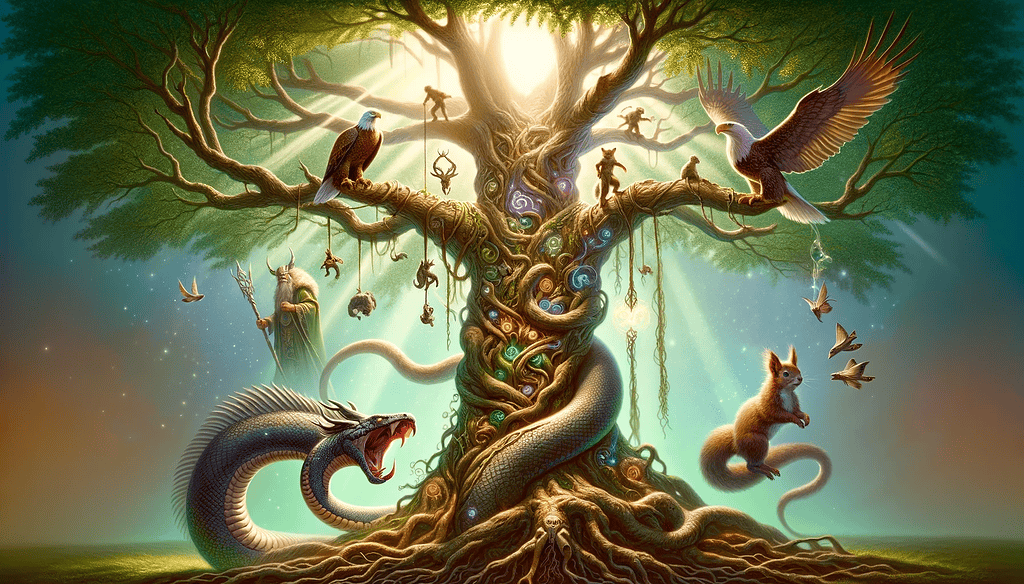
The Nine Worlds of Norse Mythology
| World | Inhabitants | Notable Features | Key Significance |
|---|---|---|---|
| Asgard | Aesir Gods | Valhalla, the great hall of fallen warriors | Leadership, valor, and the war-skilled hall of heroes |
| Midgard | Humans | Encircled by a great ocean and Jormungandr | Humanity’s realm and the center of the mortal world |
| Jotunheim | Giants (Jotnar) | Rugged landscapes, home of ancient giants | Chaos, strength, and the wild forces of nature |
| Vanaheim | Vanir Gods | Less known, associated with fertility and wisdom | Harmony, nature, and the prophetic powers |
| Alfheim | Light Elves | Luminous beings surpassing the beauty of the sun | Magic, art, and celestial beauty |
| Svartalfheim | Dwarves | Underground realm of master craftsmen | Craftsmanship, creation, and the magic of making |
| Niflheim | Ice and Mist Beings | The primordial world of ice, cold, and mist | Beginning of creation and the raw forces of nature |
| Muspelheim | Fire Giants | Realm of fire, home to Surtr with his flaming sword | Destruction, power, and the fire of creation |
| Helheim | Dead Souls | Gloomy underworld, ruled by Goddess Hel | Death, the afterlife, and the fate of the non-valiant |
Each world holds its unique charm, inhabitants, and role within the vast cosmos of Norse mythology, making this cosmology a rich tapestry of interwoven tales and lore.
Asgard: Home of the Aesir Gods
Asgard, perched high in the branches of Yggdrasil, is the shining realm of the Aesir gods, beings of might and valor. It is a place of grand halls and majestic palaces, with Odin’s hall, Valhalla, standing out as the most renowned, where the souls of warriors fallen in battle are welcomed. This divine fortress is encircled by immense walls, a testament to the gods’ might, built to protect against the giants with whom they frequently clash. Asgard is not just a realm but a symbol of order, leadership, and the pursuit of knowledge and wisdom within Norse cosmology.
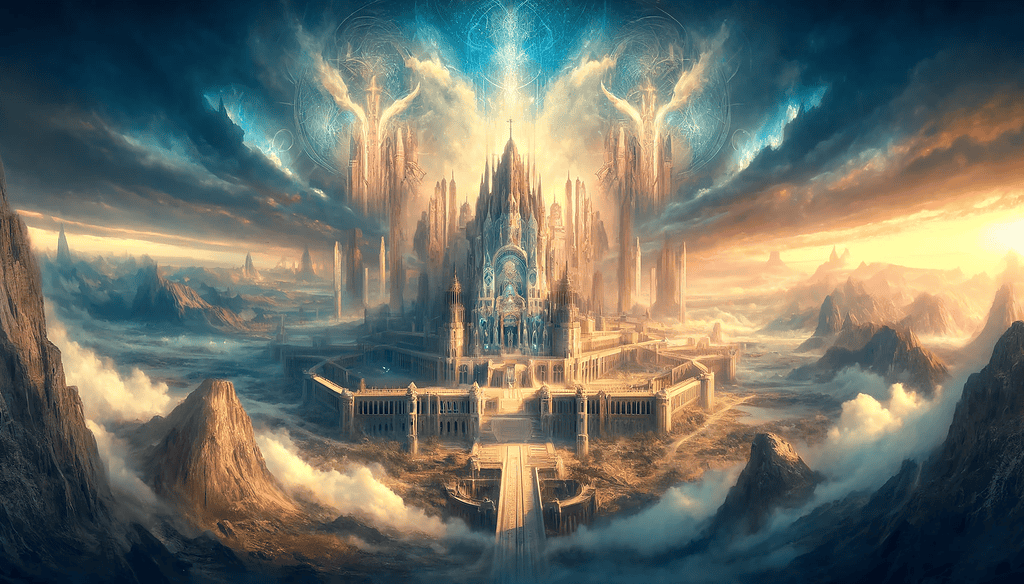
Midgard: The Realm of Humans
Midgard, the middle enclosure, is the world known to us, the realm of human beings. Encircled by a vast ocean and the great serpent Jormungandr, Midgard is connected to Asgard by the rainbow bridge, Bifrost, acting as a gateway between the gods and humans. This world, created from the body of the first giant Ymir, is a place of beauty and hardship, where humans live their lives under the watchful eyes of the gods, illustrating the interconnectedness of all beings in Norse mythology.
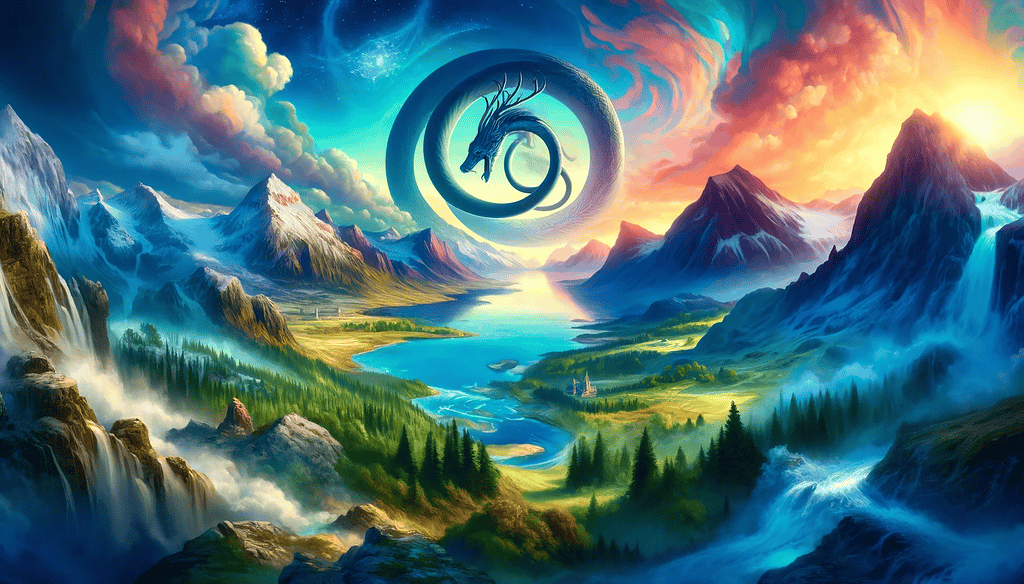
Jotunheim: Land of the Giants
Jotunheim, a rugged and wild land, is the domain of the giants, known as Jotnar. Characterized by towering mountains and deep forests, this realm is the source of constant threat and intrigue for the gods of Asgard. The giants, embodying the forces of chaos and destruction, often clash with the Aesir, yet they are also bound by complex relationships of marriage and kinship, illustrating the nuanced nature of Norse mythological narratives.
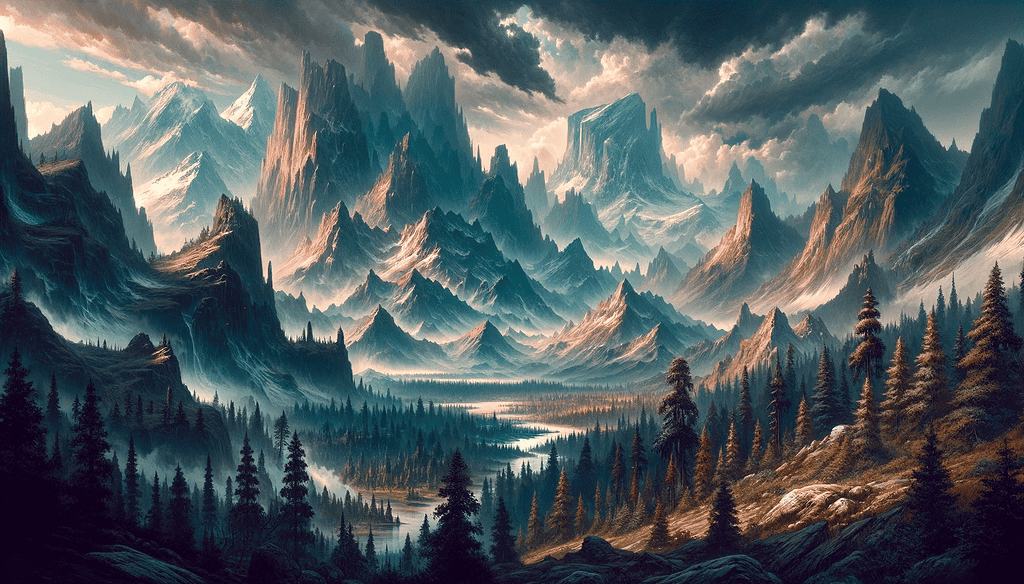
Vanaheim: The World of the Vanir
Vanaheim remains a realm shrouded in mystery, the home of the Vanir gods, associated with fertility, prosperity, and foresight. Unlike the war-focused Aesir, the Vanir embody a different aspect of divinity, emphasizing peace, nature, and the cycles of life. This realm, though less documented, plays a crucial role in the balance of power within the Norse cosmological framework, symbolizing the harmony between different facets of existence.
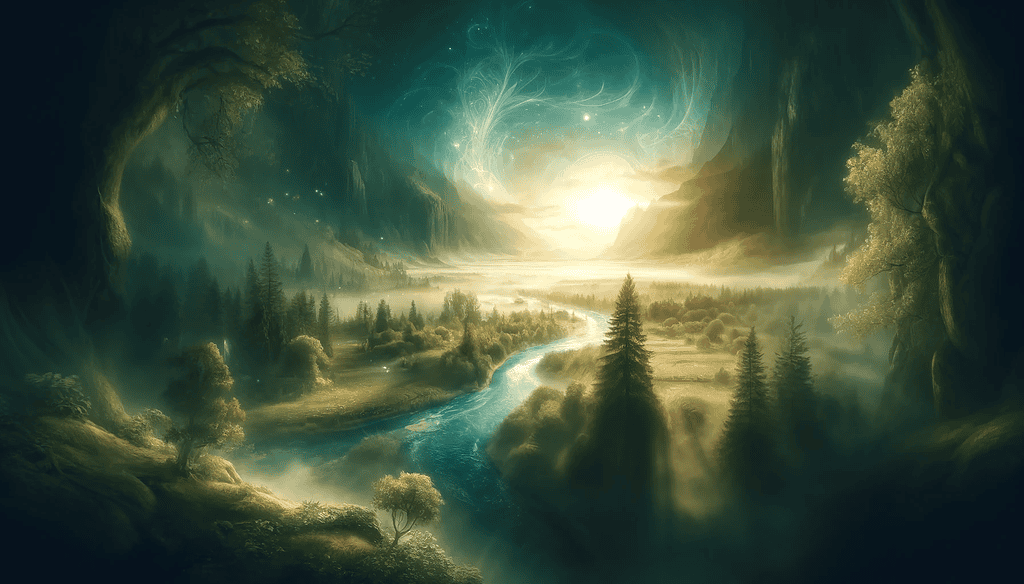
Alfheim: Realm of the Light Elves
Alfheim is the luminous abode of the light elves, ethereal beings that are said to surpass the sun in beauty. This realm, ruled by the god Freyr, is often associated with magic, art, and music, representing the ideal of celestial beauty and grace in Norse mythology. The light elves stand in contrast to their dark counterparts, bringing balance to the cosmos with their benevolent nature.
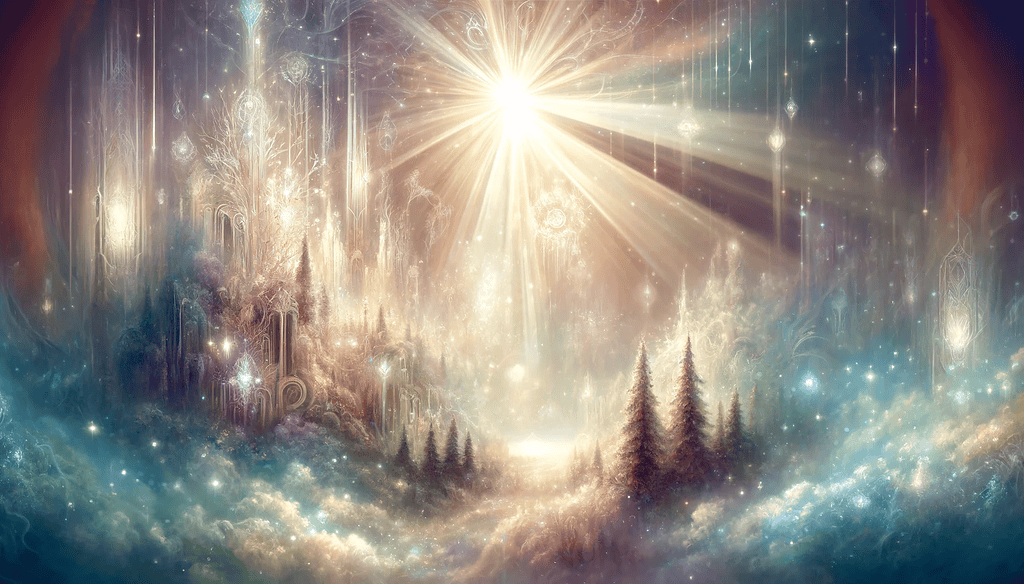
Svartalfheim: The Dark Dwellings of the Dwarves
Svartalfheim, also known as Nidavellir, is the realm of the dwarves, master craftsmen and smiths who reside in elaborate halls under the earth. Renowned for their skill in metalwork and magic, the dwarves of Svartalfheim are responsible for creating many of the gods’ most powerful artifacts, including Thor’s hammer, Mjolnir. This realm highlights the Norse culture’s respect for craftsmanship and the magical qualities attributed to artisans.
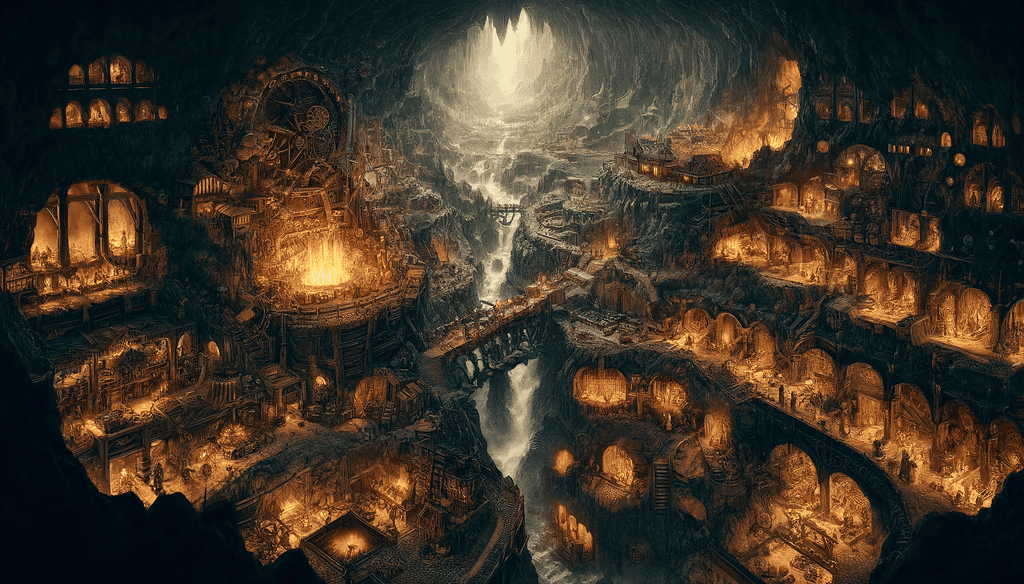
Niflheim: The Primordial World of Ice
Niflheim, the world of mist and cold, is one of the primordial realms in Norse cosmology. It is a place of ice, fog, and darkness, embodying the raw, untamed nature of the universe before the creation. From Niflheim’s icy expanse flowed the rivers that filled Ginnungagap, the great void, and mingled with the fires of Muspelheim to give birth to Ymir, the first being, setting the stage for the creation of the cosmos.
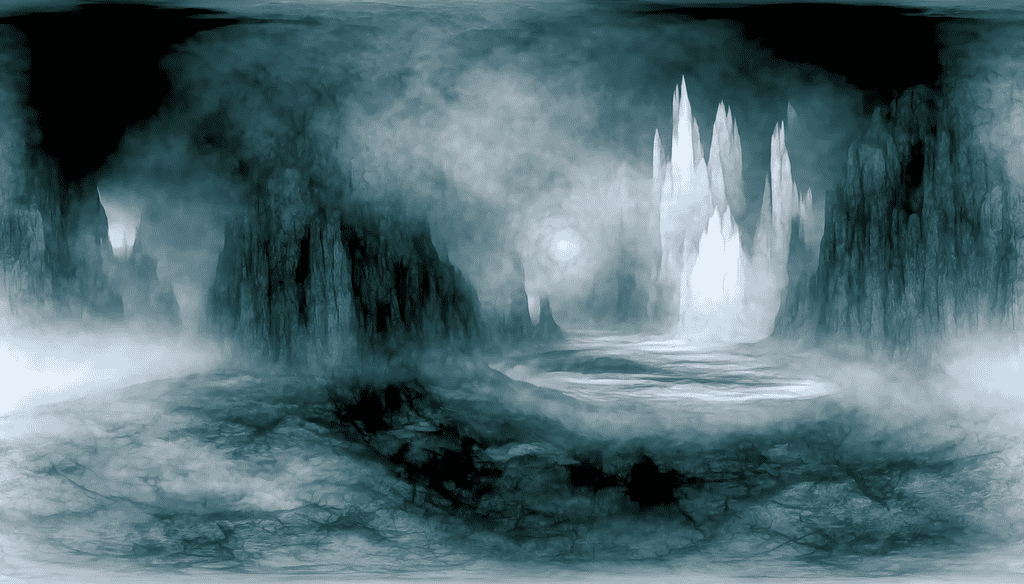
Muspelheim: The Fiery Realm of Fire Giants
Muspelheim, the land of fire and home to the fire giants, is a realm of extreme heat and flames. Governed by the formidable giant Surtr, who wields a flaming sword, this world is destined to play a crucial role in Ragnarok, the end of the world. The fires of Muspelheim, together with the ice of Niflheim, represent the fundamental forces of creation and destruction in Norse mythology, underlying the cyclical nature of the cosmos.
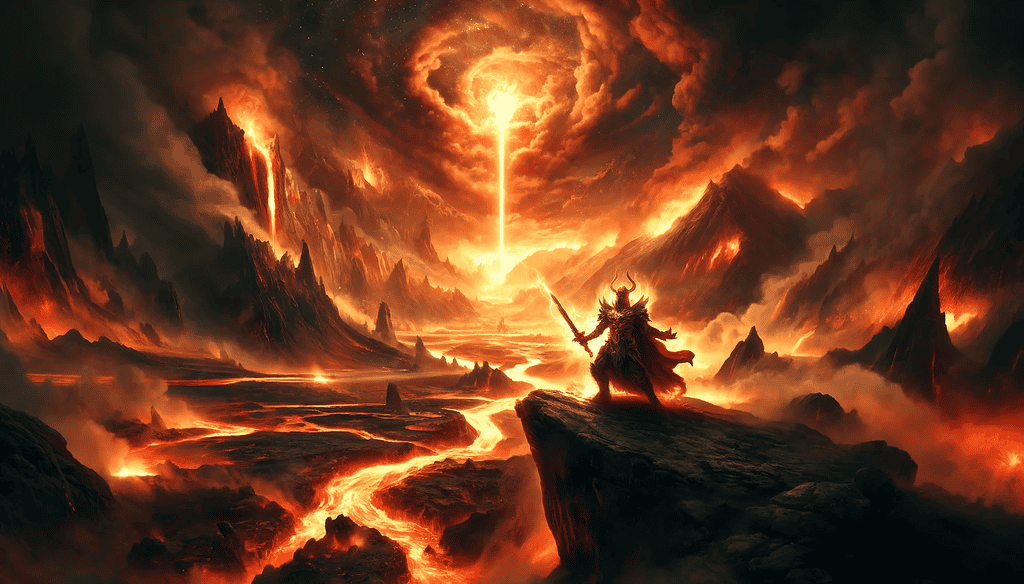
Helheim: The Underworld Governed by Goddess Hel
Helheim, the realm of the dead who did not die gloriously in battle, is governed by Hel, the daughter of Loki. It is a somber, mist-shrouded world, where souls lead an existence that mirrors their lives in Midgard. Unlike the fiery Christian concept of Hell, Helheim is a cold, dreary place, emphasizing the Norse belief in an afterlife that reflects the moral and ethical standing of one’s earthly life. This realm completes the complex tapestry of the Norse cosmological model, embodying the inevitability of death and the continuity of the soul’s journey.
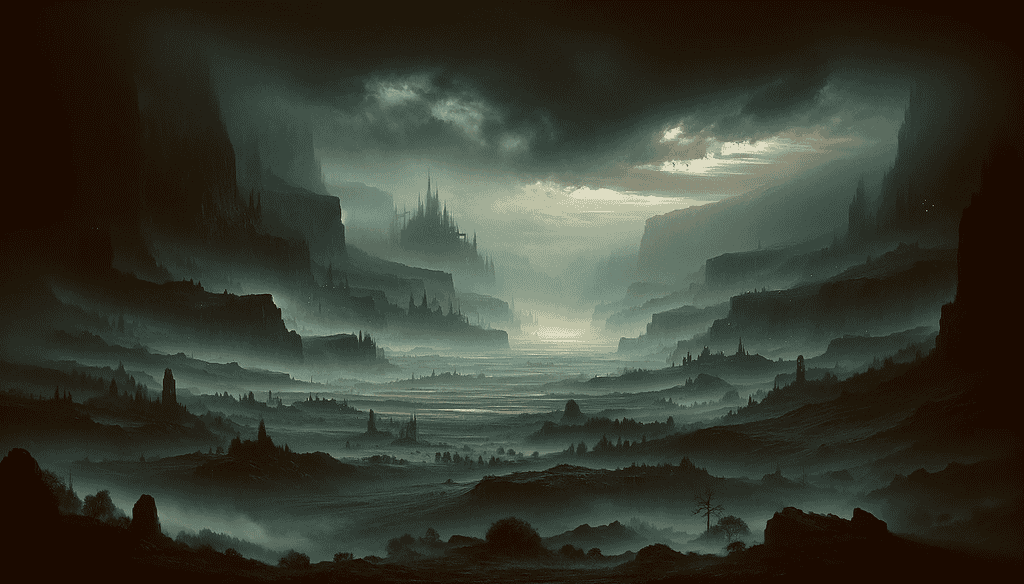
Each of these nine worlds, from the divine heights of Asgard to the murky depths of Helheim, contributes to the rich mosaic of Norse mythology. They illustrate a universe where gods, giants, humans, and mystical beings coexist, each playing their part in the grand narrative of existence. For modern followers of Norse paganism and enthusiasts of Viking lore, these realms offer a profound connection to the natural and spiritual world, reflecting timeless themes of creation, conflict, and the quest for harmony.
Norse Creation Myth: The Beginning of Everything
In the beginning, there was nothing but the vast emptiness known as Ginnungagap, a primordial void that lay between the realms of pure fire, Muspelheim, and dense ice, Niflheim. As the warm air of Muspelheim met the cold mists of Niflheim within Ginnungagap, a miraculous event occurred: the ice began to thaw and drip, and from these drops emerged Ymir, the first of the frost giants, a being of immense power and the progenitor of all Jotnar.
Alongside Ymir, the thawing ice also gave life to Audhumla, a primordial cow, whose milk fed Ymir. As Audhumla licked the salty ice blocks, the first of the Aesir gods, Buri, was revealed. Buri’s son, Borr, and his wife, Bestla, a giantess, then bore three sons: Odin, Vili, and Vé. These gods, through an act both violent and creative, ended Ymir’s life, and from his body, they crafted the world as we know it.
Ymir’s flesh turned into the earth, his blood into the oceans, his bones into mountains, and his hair into trees. The gods flung his skull upwards to create the sky, held aloft by four dwarves representing the cardinal points. From Ymir’s eyebrows, they fashioned Midgard, the realm of humans, a protective barrier against the remaining giants.
Thus, from the primal chaos of Ginnungagap, through the interplay of elemental forces and divine intervention, the cosmos took shape, giving rise to the nine worlds nestled within the branches and roots of Yggdrasil. This creation myth, at once grim and wondrous, lays the foundation for the rich tapestry of Norse mythology, setting the stage for the epic sagas of gods, giants, and humans that follow. For modern pagans and enthusiasts of Norse lore, this narrative not only recounts the origins of the universe but also encapsulates the enduring themes of transformation, interconnectivity, and the cyclical nature of life.
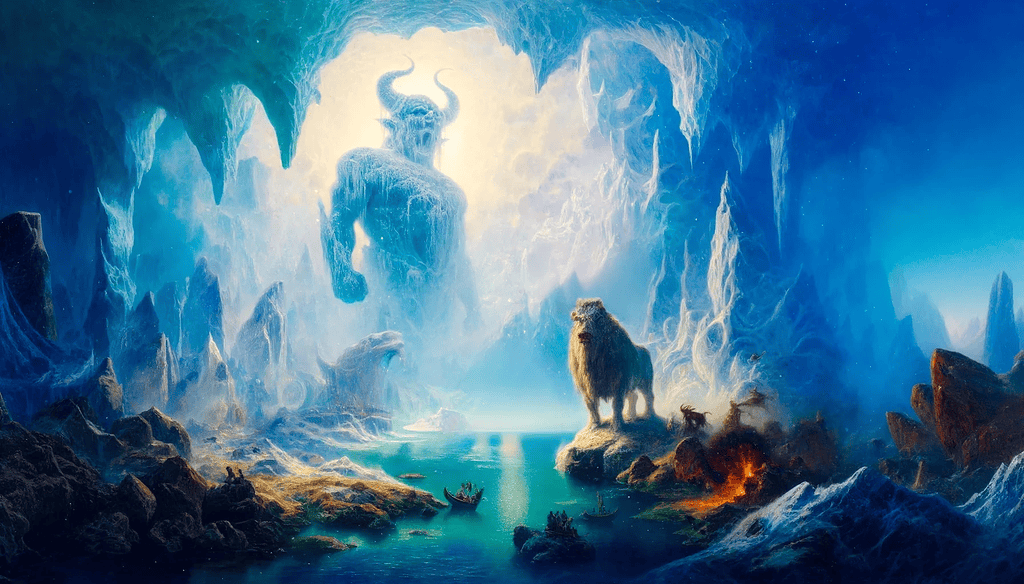
The Interconnectivity of the Nine Worlds
The Norse cosmos is a complex web of interconnected realms, each playing a pivotal role in the grand tapestry of existence. Central to this intricate network is Yggdrasil, the World Tree, whose vast branches and deep roots serve as the cosmic pathways linking the nine worlds. This interconnectivity ensures that the actions and events in one realm can have repercussions throughout the entire Norse universe, highlighting a profound sense of unity and interdependence.
The Role of Yggdrasil
Yggdrasil stands as the ultimate symbol of cohesion within Norse mythology, its life force extending into every corner of the cosmos. The tree’s branches reach into the heavens, touching the realms of gods and light elves, while its roots delve into the shadowy domains of giants and the dead. This physical and spiritual connection between the worlds underscores the Norse belief in the fundamental interconnectedness of all things, from the divine to the mortal.
Pathways and Portals
The interactions between the worlds are facilitated by various pathways and portals, the most famous being the rainbow bridge, Bifrost, which connects Asgard, the realm of the gods, to Midgard, the world of humans. Such connections are not merely physical; they are imbued with magical and ritual significance, serving as conduits for the gods, spirits, and even humans to traverse the cosmos, engage in quests, and fulfill their destinies.
The Cosmic Balance
The interplay between the nine worlds is a delicate balance of creation and destruction, order and chaos. Events in one realm, such as the skirmishes between the Aesir gods and the giants of Jotunheim, can have significant implications for the stability of Yggdrasil and, by extension, the entire cosmos. This balance is maintained through the ongoing efforts of the gods, the natural processes embodied by Yggdrasil, and the actions of countless other beings.
For followers of Norse paganism and mythology enthusiasts, understanding the interconnected nature of the nine worlds offers not just a glimpse into the ancient Norse worldview but also insights into the complexity of our own world. It speaks to a universe where every action, every life, however small, is part of a larger, interconnected whole. This perspective invites us to see the world not as a collection of isolated entities but as a vibrant, interconnected cosmos, echoing the ancient Norse understanding of existence.
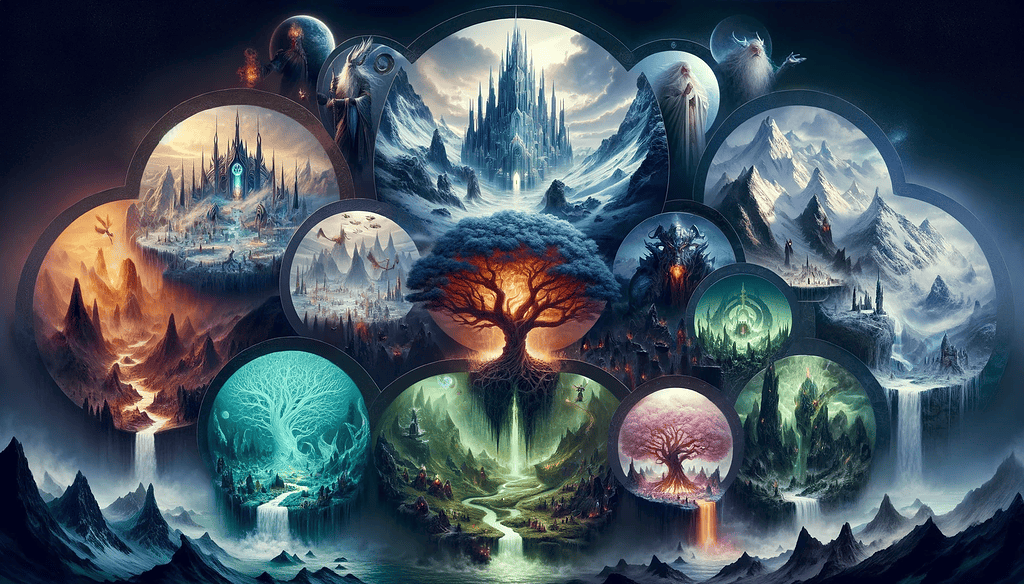
The Enduring Legacy of Norse Cosmology
Norse cosmology, with its vast network of gods, giants, and mystical realms, continues to captivate those who seek wisdom in the ancient world. Its legacy extends beyond mere tales, embedding itself into the spiritual practices of modern pagans and enthusiasts of Norse mythology. This rich tradition offers a unique lens through which we can view our own existence, emphasizing the interconnectedness of all life and the cyclical nature of the universe. For the Norse paganism community, these stories are more than myth; they are a testament to the enduring power of nature, fate, and the cosmic balance that governs all.
Check out these other categories:
